New LED Light Modules with Cree, Luxeon, Nichia and Seoul LEDs
LEDdynamics, a leader in LED lighting solutions, is proud to announce the launch of several new LED light modules.
LEDdynamics, a leader in LED lighting solutions, is proud to announce the launch of several new LED light modules.
 Covid-19 is on everyone’s mind these days, and there is good reason for that. This single event has upended our lives, some more than others – but every life to some extent. It makes sense, therefore, that we would go looking for solutions wherever we think we could find them. If we believe that there is a piece of technology that promises to prevent any more suffering, to open our economy up, and to get us back to some sense of normalcy, then it is worth examining: especially if that technology has led to definitive results.
Covid-19 is on everyone’s mind these days, and there is good reason for that. This single event has upended our lives, some more than others – but every life to some extent. It makes sense, therefore, that we would go looking for solutions wherever we think we could find them. If we believe that there is a piece of technology that promises to prevent any more suffering, to open our economy up, and to get us back to some sense of normalcy, then it is worth examining: especially if that technology has led to definitive results.
This is Utraviolet (UV). Before you even ask, yes, UV can kill covid-19. Do you know the UV that you soak up when you are sunbathing or spending a day at the beach? It is capable of killing the virus that has sent our entire world into a tailspin. Before you get your hopes up too high, though, you should realize that not all UV light is the same. There is some UV light that is not nearly as effective at killing covid-19 – at least not before it causes some serious damage to you and your body.
Take UV-A, for example. The longer wavelengths, which we can see, are ineffective at killing covid-19 and eradicating germs in the way that other UV light can. To be effective, UV-A needs to emit in massive amounts, far past the point of practicality. UV-B, for the most part, seems similarly ineffective.
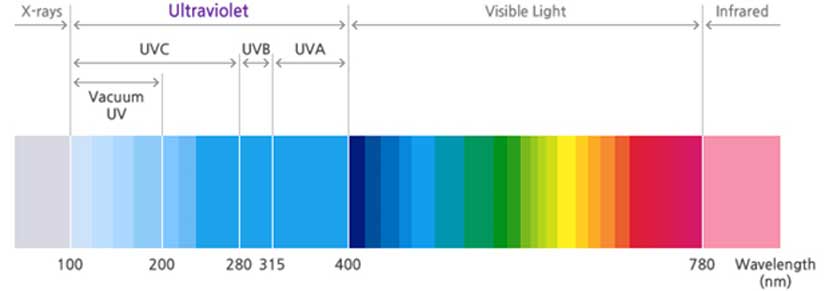
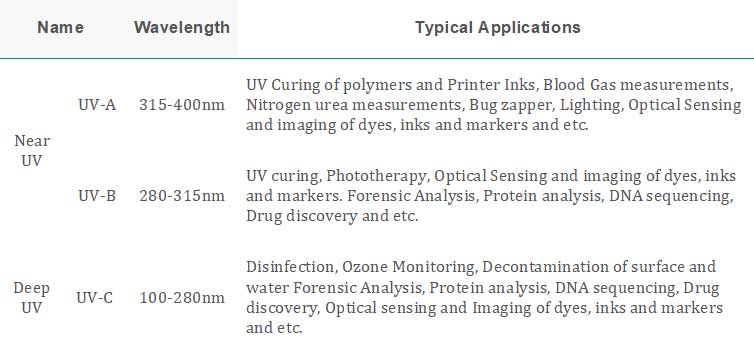
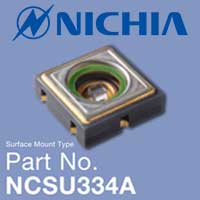
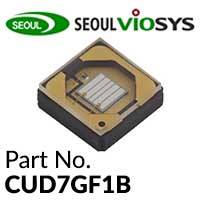 It is UV-C that is of most interest to us. At LEDdynamics, we have devoted ourselves to creating UV light products that are effective and that match up with consumers’ specific needs: the Seoul, which offers a lower output and thus a lower cost, and the Nichia, which offers a higher output and thus a higher cost.
It is UV-C that is of most interest to us. At LEDdynamics, we have devoted ourselves to creating UV light products that are effective and that match up with consumers’ specific needs: the Seoul, which offers a lower output and thus a lower cost, and the Nichia, which offers a higher output and thus a higher cost.
In this post, we are going to review all of the information that you need about UV-C for sterilization, including why it is effective at all and what that means for your health throughout the covid-19 pandemic and beyond.
As you would expect, interest in UV light technology has boomed since the covid-19 pandemic emerged. Everyone wants to know if this technology can provide the respite that we are all craving. Is this the tool that is going to change our lives? Because of this massive increase in interest, it makes sense that we would consider what is out there. The technology that you will find available in many places is not, unfortunately, quite up to the LEDdynamics standard.
None of this is pie-in-the-sky science, either. Versions of germicidal UV light have found uses since the late 19th century, and when the Ebola virus broke out in West Africa in 2014, engineers and consumers alike turned their attention to the technology, which had remained mostly confined to close-up surface disinfection.
When applied to surfaces, UV-C light within the 200-to-280 nanometer range can kill bacteria and spores and “deactivate” covid-19 (the fancy term we use for “kill” since viruses aren’t technically alive).
As you would also expect, technology over the last several months has improved rapidly. Everyone knows what is at stake here: if UV-C is both practical and effective to the degree that we need it to be, it could move all of our lives forward, out of this nightmare once and for all.
So, how do we get there? How do we push UV-C to the point of practicality and efficacy that it can be world-changing?
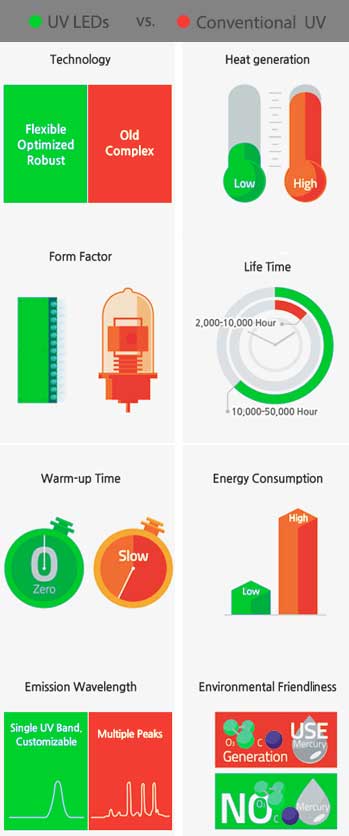 The first and most significant step that we can take toward this goal is to realize that if we want to optimize UV lights, we need to forget about conventional lamps altogether. The same shift that businesses and consumers have made in order to cut costs and improve lighting ambiance is the shift that we need to make in order to put UV light to work for us – embracing LEDs and all of the benefits that they have to offer.
The first and most significant step that we can take toward this goal is to realize that if we want to optimize UV lights, we need to forget about conventional lamps altogether. The same shift that businesses and consumers have made in order to cut costs and improve lighting ambiance is the shift that we need to make in order to put UV light to work for us – embracing LEDs and all of the benefits that they have to offer.
The first benefit of LED UV lights is how much more energy-efficient they are than conventional UV lights, meaning that you do not need to make any alterations to your infrastructure in order to use them. To get started with an LED UV light, you plug it into the same wall outlet that you would use for all of your other lights – as simple and as straightforward can be.
Building on this, an LED UV light does not require you to keep it running when you are not using it – which conventional UV lights do, requiring lengthy warm-up periods to function at all. You can turn an LED UV light on and off at will, confident that its effects will begin as soon as you press the “on” button, no warm-up period necessary. A warm-up period also means that conventional UV lights become uncomfortably warm wherever you place them, and LED UV lights do no such thing.
Conventional UV lights, meanwhile, emit ozone, which is hazardous to people, causing breathing problems if the area is poorly-ventilated. Since the last thing that you want is to introduce environmental respiratory issues in an effort to ward off a respiratory illness, the LEDs’ advantage on this front is substantial.
Add to the inconveniences and hazards of these challenges – the warm-up time and the ozone – the fact that they are going to create additional costs for business and consumers. Anyone who uses a conventional UV light must then plan on making up for the additional energy expenditures and ventilating the area properly.
Using an LED UV light, you never need to worry about any of that.
As if all of this were not convincing enough, there is also an environmental aspect to it. While the mercury in conventional UV lights can seep out of the light and damage the environment, there is no such concern for LED UV lights – which will, in turn last longer and remain more efficient throughout their lifespan.
All of this information is certainly exciting if you have never heard it before. If you are new to UV lighting, then you are probably thinking “Sign me up for some LEDs!” While we would agree with you, we would also suggest learning a little bit more about the technology first. This is not a solution that is without risk. There are risks to UV lights, just as there are drawbacks and limitations.
As David Sliney of the Illuminating Energy Society puts it, incomplete information about germicidal UV and other UV technology may create “a false sense of security.” The fact of the matter is that this is neither a panacea nor a put-it-up-and-forget-it sort of tool. You cannot place a UV light somewhere and assume that it is going to destroy every virus in the room. If anything does not come into contact with the light, you should assume that it is still potentially contaminated – because UV light can only deactivate covid-19 by coming into contact with it.
 Another point is that UV germicidal light can become dangerous itself through improper installation or usage. UV-A and UV-B light, for instance, can damage our eyes and our skin if too much of it hits us. UV-C seems safer, however, because the outer, dead layer of our skin tends to absorb most of it, unlike UV-A and UV-B, both of which are much more effective at penetrating through to the lower layers of our skin.
Another point is that UV germicidal light can become dangerous itself through improper installation or usage. UV-A and UV-B light, for instance, can damage our eyes and our skin if too much of it hits us. UV-C seems safer, however, because the outer, dead layer of our skin tends to absorb most of it, unlike UV-A and UV-B, both of which are much more effective at penetrating through to the lower layers of our skin.
Yet another point is that we cannot expect UV light to break through one surface into another. Unless we are shining it onto surfaces that are clear and clean – free of dust, free of soil, free of any contaminants at all – it is almost a sure thing that it will not disinfect the surface effectively.
What, then, does proper installation and usage look like? Since we know that UV light can be useful and that, given its 70-plus-year usage, it can be safe, how do we arrive there?
The key is to temper our expectations. If we think about UV light as a cure-all and assume that we can do whatever we want because we are shining it onto the surfaces in our home, office, and/or gym, we may end up unpleasantly surprised. The Illuminating Energy Society describes germicidal UV as a “complementary” technology, adding to an overall strategy based on cleanliness, hygiene, and sanitation.
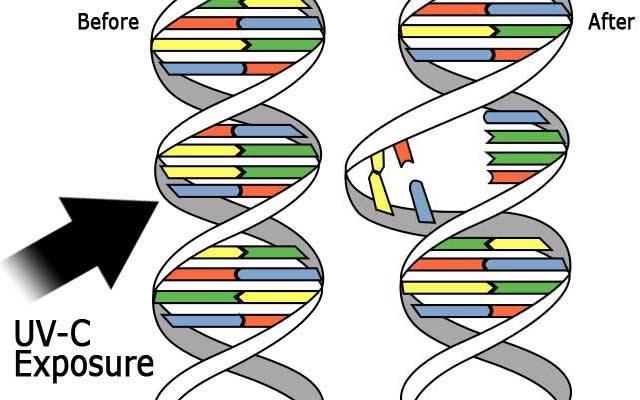 Once we have put UV into perspective and we recognize that UV-C light is the most interesting to us of all the UV lights, it makes sense to ask – how does it actually work? How can a light deactivate a virus and kill a germ?
Once we have put UV into perspective and we recognize that UV-C light is the most interesting to us of all the UV lights, it makes sense to ask – how does it actually work? How can a light deactivate a virus and kill a germ?
This comes down to the short wavelength of UV-C. That short wavelength can break down the RNA that makes up covid-19 and other virus strains, preventing them from making copies of themselves, which is how viruses propagate, each strain making another copy and another and so on. The process is similar for bacteria, the UV getting in the way of the bacteria’s DNA so that they cannot replicate either.
Specifically, there are two variables that concern us when we are implementing UV-C light for sterilization: the time that we are exposing the light to the surface and the power that the light is emitting. While it may seem very basic, almost as if it were made up, researchers have determined that 17 megawatts of a 254-nanometer lamp-emission radiant power per cubic meter of space is ideal for disinfecting the air. This is assuming, of course, that the air is going through some sort of a treatment system. If not, then the process may take more time to become effective.
The sterilization process that we have described applies to both conventional and LED lights. That does not change. What does change, however, is the efficiency of the lighting fixtures otherwise. Here is the problem that has persisted: for some time, LED lights have been available in UV-A form but not in UV-C form. This is largely why LED UV lights have remained out of the conversation.
Finally, we are seeing progress in this area.
LED UV-C lights are now tenable. There are two particular examples of LED UV-C lights that seem bound to become widely-accepted: the Seoul Viosys and the Nichia. Let’s take a look at each of these cutting-edge LED UV-C light solutions:
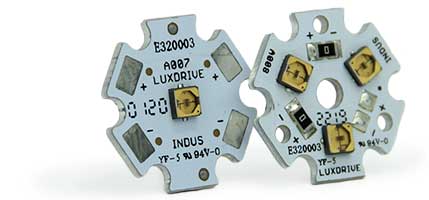
Seoul UV-C LED Light Module from LUXdrive

Nichia UV-C LED Light Module from LUXdrive
This is it: the best of both worlds. By combining LEDs with UV-C, we are talking about the stuff of dreams, the sort of innovation that epidemiologists, world leaders, and medical professionals had for years hoped would come along – and that they have hoped even more stridently, with bated breath, would come along ever since this pandemic took so much from all of us.
So, where else can this technology can go?
That is the question we have asked ourselves at LEDdynamics. Throughout the covid-19 pandemic, we have watched as our friends and family have struggled to make their way from one month to another, never quite sure what is going to happen next and what we can do to make our way out of this period in our lives.
UV-C light may not be the only answer, but it is one viable answer, a workable solution that we can use to fight back against covid-19. We are working hard to help our clients adopt LED UV-C lighting into their homes, their offices, their gyms, their businesses, and other living spaces. We offer world-class services in this area, overseeing board design, thermal design, and LED power supply installations and helping to determine the number of LEDs that is appropriate for your system.
To learn more about the guidance and support we can provide with regards to LED UV-C solutions, contact us today.
May 21, 2019
LEDdynamics, Inc. announces the introduction of the Centaurus J006 Light Module.
The Centaurus J006 high-power light module was designed to interface with the Khatod PL1672 Series optics and can be equipped with CREE’s XP-E2 and XP-G3 Series LED’s.